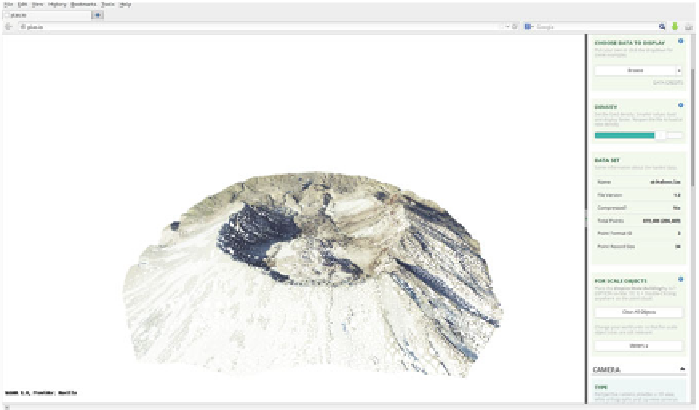Geoscience Reference
In-Depth Information
Fig. 15.2
Web-based point cloud viewer based (plas.io)
Another format related to LAS is the LASzip format, commonly called LAZ,
which was developed by Martin Isenburg. LAZ is losslessly compressed LAS.
LASzip is LGPL-licensed software with compression rates between five and ten
fold, depending on input data. The data model, meaning, and arrangement of LAZ
data are the same as LAS. LASzip is commonly used in situations where LAS would
fit, minus the extra file size.
Each LAS file contains a
public header block
. It stores generic information about
the point cloud, including a histogram of the number of points by return. An example
of a header is shown in Sect.
15.3.1
. After the header block, there is an optional
sequence of
variable length records
(VLRs). Projection information, metadata and
other user application data can be stored as VLRs. The actual point data are kept
in the
point data records
, with the attributes listed in Table
15.1
. Depending on the
point data record format (PDRF), the supported attributes can vary.
From version 1.4, the point data records can be succeeded with a sequence of
extended variable length records
(EVLRs).
Processing LiDAR data is not covered by the current GDAL utilities or API.
Recently a point data abstraction library (PDAL
5
) has been released under a BSD
license.
6
Similar toGDAL for raster data, it provides aC/C++API for reading, writing
and translating point data in different formats. It is developed by Howard Butler and
Michael Gerlek as the successor to libLAS.
7
While libLAS was primarily designed
as a C/C++ library for reading and writing LAS files, PDAL supports a wider range

Search WWH ::

Custom Search